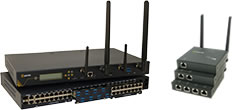
How smart banking is fueling the IoT ecosystem
By Max BurkhalterNovember 13, 2018
As more industries recognize the potential for IoT to transform their supply chains and improve their workflow, the need for stable networks has only grown more pressing. The ubiquity of IoT has created a new ecosystem, where companies, consumers and new technologies coexist in a nexus of information and insight.
At the heart of this new ecosystem is the banking industry, which increasingly facilitates the informational and financial exchange that IoT is predicated upon. This is quickly becoming the new norm for businesses and the customers they service, but the most obvious innovations are admittedly consumer-facing. To understand how the banking world has been transformed, we must first consider what IoT strategies are being deployed and how they benefit consumers.
Improved access capabilities
Firstly, the rise of smart devices has created a higher demand for mobile applications and highlighted the need for reliable, anytime access. According to projections from the research firm Gartner, it's expected that 20 billion "internet-connected things" will be in use by the year 2020. This figure does not only include general-purpose devices like phones, computers and tablets, it also figures in more specific objects like vending machines, athletic equipment and even home appliances.
The information IoT highway is increasingly connecting every facet of our daily lives into a digital tapestry, allowing for more personalized access to suit the individual needs of each consumer. In the past, customers would need to physically travel to their bank or call up an automated phone line to perform basic financial transactions, like checking account balances or moving money around. But thanks to the accessibility of banking apps and other omni-channel approaches, banks are now able to meet the needs of their customers without operational limitations.
This new era of all access banking has helped consumers manage their money more efficiently by offering direct transaction feeds that update as they spend. This real-time reporting feature has allowed banking customers to exert more control over their finances and accurately track their spending habits. As the technology continues to improve, consumers may experience more financial independence, owed in part to the analytical tools provided alongside the basic transactional functions of the applications.

Analytics drive financial insights
The power of data is magnified as more nodes of information are joined to a network, allowing for precise analytics and the generation of actionable insights. IoT has only hastened the trend toward wide-scale interconnectivity, offering tangible benefits for consumers who connect their mobile devices and/or home computers to their bank accounts, credit cards, utility bills and online purchase histories. The more information banking apps can aggregate and analyze, the better consumers will be able to understand their spending habits.
Almost every banking app offers an account activity reporting feature that aggregates all the collected data into an easily understood financial overview. These tracking features help to promote financial well-being by converting captured data into intuitively organized spending reports. A survey conducted by the American Bankers Association found that nearly two-thirds of U.S. citizens use digital banking channels as their primary method of finance management. This finding points to a growing dependence on mobile-friendly banking that shows no sign of slowing down, suggesting that IoT integration will continue to drive innovation in the banking sector.
Why banks need reliable IoT infrastructure
Banking institutions are the grand mediator of modern business relationships, both in the context of B2B and business-consumer transactions. This intermediary role necessitates consistent network performance and reliability, and failing to meet transactional demands could spell disaster for all parties involved. In the interest of keeping the realm of IoT viable in the long-term, banks must consider how their server rooms and hardware components contribute to the overall stability of the digital monetary landscape. Without a reliable infrastructure to back-up crucial financial operations, the pace of innovation could be slowed for businesses and consumers alike.
Perle offers high-performance networking tools that can keep financial institutions online and aboveboard. Secure stronger performance for your critical infrastructure with industrial-grade hardware components like Device Servers and Terminal Servers. Read some of our customer stories to find out how we've helped other forward-thinking banking organizations take full advantage of IoT and propel the world forward.



